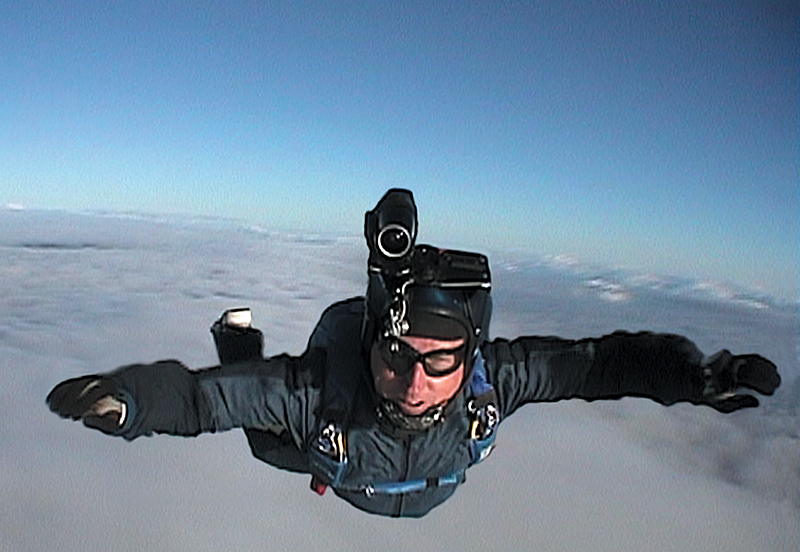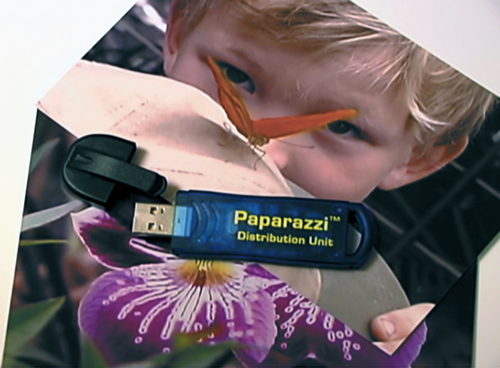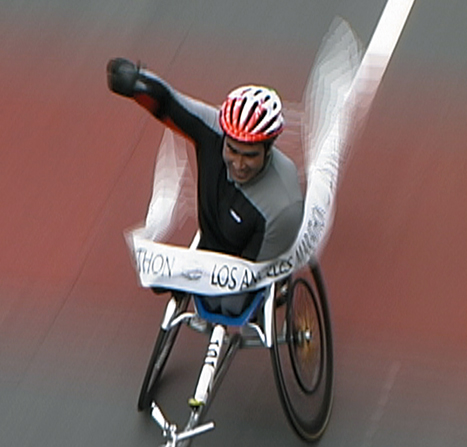
From Video to Photo
Originating Technology/ NASA Contribution
Ever wonder whether a still shot from avideo could serve as a “picture perfect” photograph worthy of being framed and proudly displayed on the mantle? Wonder no more.
A critical imaging code used to enhance video footage taken from spaceborne imaging instruments is now available within a portable photography tool capable of producing an optimized, high-resolution image from multiple video frames.
Partnership
RedHawk Vision, Inc. , a Costa Mesa, California-based subsidiary of Irvine Sensors Corporation, developed the “Real-Time Self-Contained Image-Motion Compensation for Spaceborne Imaging Instruments” algorithm with assistance from NASA’s Marshall Space Flight Center under Phase I (1992) and Phase II (1998) Small Business Innovation Research (SBIR) contracts. By calculating the movement of a scene and then repositioning it back to the original position, the algorithm allows NASA to zoom and stabilize video footage without loss of detail, extract photo-quality still images, and even salvage dark, blurry, and jumbled video that is otherwise unusable. RedHawk Vision went on to complete another series of SBIR contracts with the U.S. Air Force, further advancing the video-to-photo software in preparation for commercialization.
Released to the public in 2000, RedHawk Vision’s Video Pics™ was the first product to evolve from the NASA and U.S. Air Force collaborations. Video Pics demonstrated the capability to successfully extract 35-millimeter-quality photographs from continuous video and produce digital files compatible with image-editing software.
As the millennium progressed, so did digital technology, prompting RedHawk Vision to create a new line of video-to-photo software that could convert higher frame-rate video into optimal image prints.
Product Outcome
The new Paparazzi™ stand-alone video-to-photo processing software generates clear, high-quality images (300 dots per inch) from noisy, grainy streaming video, much in the same way that the human brain “sees” video content: scene by scene. Paparazzi takes the best parts of multiple frames of video and overlays them to create an image of superior quality in less than 10 seconds, unlike a frame-grabber, which extracts images from only a single video frame and at a much slower rate. As a result, Paparazzi catches extra details unattainable when using a frame-grabber, such as the exact time displayed on a wristwatch being worn by an individual in motion in a video.
In addition to combining video frames, Paparazzi adjusts pixel aspect ratio and corrects color. Controls for brightness, contrast, saturation, and hue let users fine-tune lighting as they would with any type of photo-editing software. Other features include zooming and cropping, optimized black & white processing, noise reduction, and 16:9 video support (16:9 is considered the new “standard” for digital television broadcasts).
The Paparazzi software and its supporting files are supplied on a Universal Serial Bus (USB) Flash drive “distribution unit” the size of an index finger, allowing for quick and easy transport of print-ready images between computer systems. To access the software, the user simply plugs the distribution unit into a computer’s powered USB port and double-clicks on the associated icon in the drive’s window. Paparazzi processes all video files that play on personal computers via the Apple QuickTime® downloadable media player.
In 2003, Paparazzi saved the day in a “one off” situation where a wedding photographer failed to make it to the church for a wedding ceremony. Brian Coe, the owner of an events videography firm just outside of Paris, France, named SQYnet Productions, purchased the video-to-photo software in order to supply stills to a “tearful bride” who inquired whether photos could be extracted from her wedding video. With Paparazzi, Coe was able to extract 40 high-quality photos from the video to satisfy the customer’s request. SQYnet Productions has since incorporated Paparazzi images as an option for some of its standard wedding packages, leading to increased revenues for the company. With Paparazzi retailing at $279, Coe is happy to report that the software technology has already paid for itself.
Other applications for the technology include forensics, where crime investigators can use the software to decipher clues potentially caught on nighttime surveillance tapes, as well as astronomy, where astronomers can obtain sharp, distortion-free images with a combination of video recorder and a telescope.
Video Pics™ and Paparazzi™ are trademarks of RedHawk Vision, Inc.
QuickTime® is a registered trademark of Apple Computer, Inc.

Stored on a “distribution unit” the size of an index finger, Paparazzi™ software generates clear, high-quality images from noisy, grainy streaming video.

Paparazzi™ locks on the subject above and combines multiple frames to capture video movement and excitement in precision still images.

Sports enthusiasts, such as this parachuter, use the video-to-photo software to capture exciting action images.













